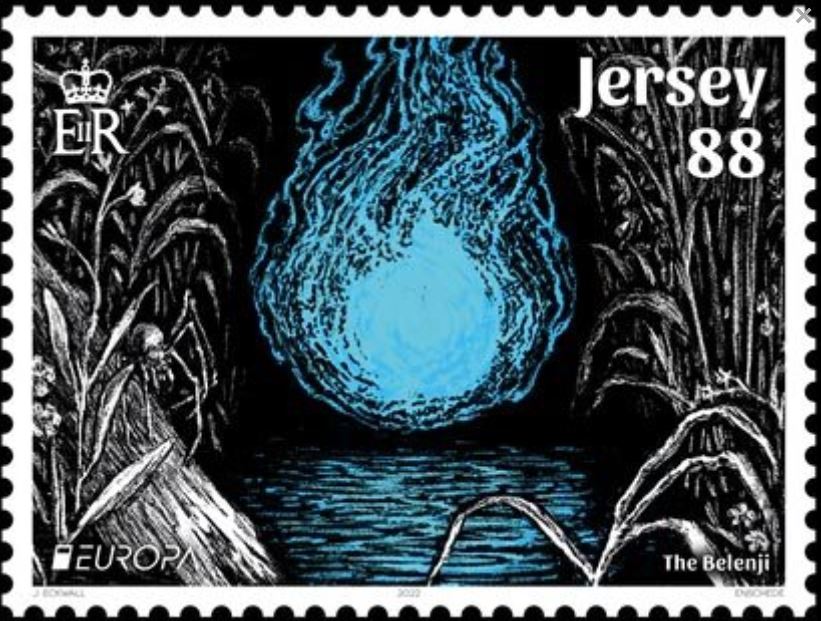
Jersey March 2022 – The Belenji – a big will-o’-the-wisp
While searching for the stamp of the month, I came across the adjacent Jersey stamp (issued March 2022). It is part of the Jersey Myths and Legends series. The 88 pence stamp depicts the Belenji, a kind of will-o’-the-wisp that haunts the Jersey marshes. A will-o’-the-wisp (also called a will-o’-the-wisp, sumpflicht, and Ignis fatuus) is the name given to a greenish-blue luminous phenomenon that is most often found in swamps, bogs, morasses, or in particularly dense, dark woods and cemeteries. Descriptions of will-o’-the-wisps vary. While they are usually described as small flames that flare up briefly and go out again, there are also will-o’-the-wisps, such as the Belenji, that can be the size of a fist or even a head.
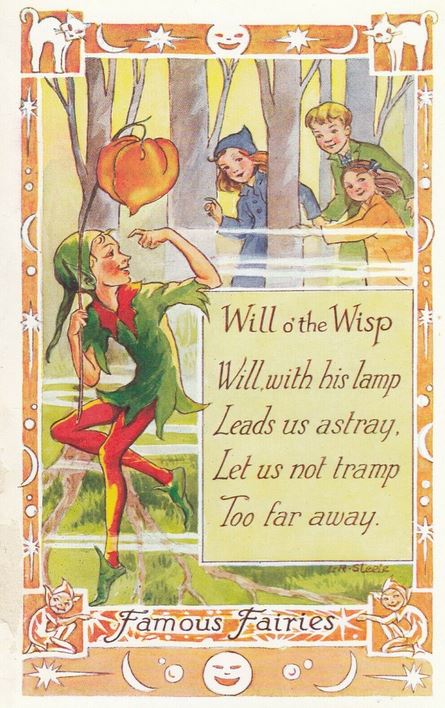
… can lead people astray.
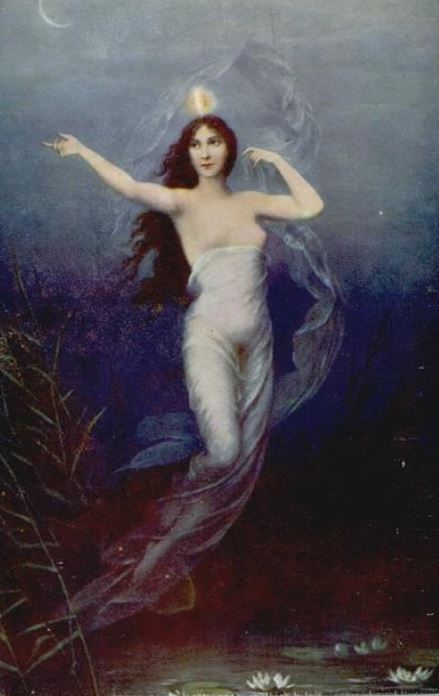
Wisps are creatures that…..
These will-o’-the-wisps have always fascinated people and they are firmly rooted in folk beliefs. In European folklore, these lights are thought to be spirits of the dead, fairies, or a variety of other supernatural beings. They try to lead travelers astray and thus, for example, deeper into the moors (postcards at right). Will-o’-the-wisps in cemeteries are often attributed to be the spirits of unbaptized or stillborn children, shuttling between heaven and hell. Similar folkloric explanations exist for the “will-o’-the-wisp” phenomenon throughout the world – only the will-o’-the-wisps have different names there. The will-o’-the-wisp is therefore a transcultural phenomenon. Is there therefore a simple globally valid scientific explanation for their appearance?

Fireflies as will-o’-the-wisps
The simplest explanation would be the existence of bioluminescent animals and plants that we all know. Fireflies or even luminescent mushrooms. At least that would be an explanation for moving will-o’-the-wisps – but they have been described very, very rarely. More probable is therefore a chemical explanation.
Organic material – all life – decays after death. In the open air, aerobic (with oxygen) decomposition takes place, and water, carbon dioxide, and energy is produced. However, if the organic material is cut off from oxygen, as underwater or in swamps, it is decomposed by anaerobic bacteria, i.e., without oxygen. This produces the digester gas, which contains methane, carbon dioxide, nitrogen, hydrogen sulfide and phosphanes.
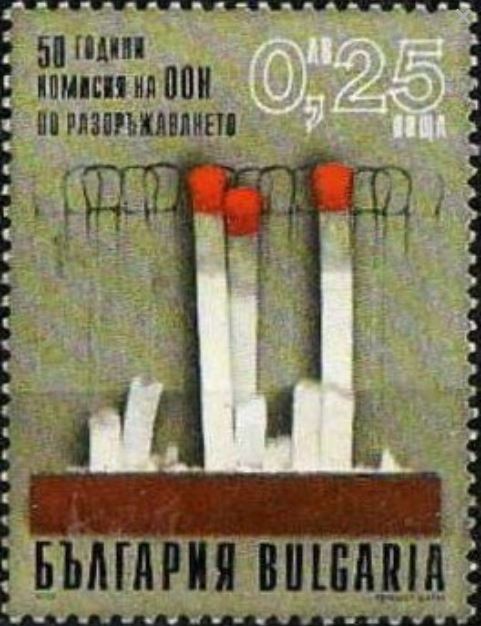
… ignited by oxidizing phosphorus compounds, as in the first matches.

Digester gases burn with a blue flame, ……
Especially the latter play an important role in the formation of will-o’-the-wisps. Monophosphane (PH3) is gaseous, diphosphane (P2H4) is a colorless liquid at room temperature and self-igniting in air. Phosphanes are very reactive. Very pure monophosphane PH3 does not ignite by itself, but higher phosphanes such as diphosphane do. Now, since there is a mixture of phosphane and diphosphane in digester gases that ignites spontaneously on contact with atmospheric oxygen, only small amounts of it are needed to ignite the much more common methane. Phosphorus was also used to make the first matches. However, these phosphorus matches had the major disadvantage that they ignited spontaneously. Such self-ignition happens from time to time in bogs, but also in cemeteries, if the foul gases make it to the surface – and there we have it: a will-o’-the-wisp. Also, the self-igniting foul gas would be an explanation for their “disappearance” when approached. Air movement dissipates the gas mixture, and the will-o’-the-wisp goes out. A simple mundane chemical explanation for the appearance and occurrence of will-o’-the-wisps.
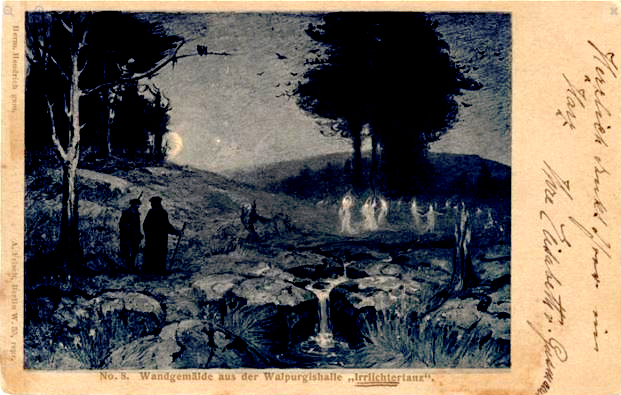
Postcard: Walpurgis Night with dancing will-o’-the-wisps
And even if there now seems to be a simple scientific explanation for the will-o’-the-wisps – they remain fascinating. Not for nothing they are omnipresent in literature. In Goethe’s “The Fairy Tale” two will-o’-the-wisps play the main role, but they also dance in his “Faust” on Walpurgis Night as indicated on the postcard on the left. And walking through the cemetery at night is still something special – unfortunately I’ve never seen a will-o’-the-wisp there….
